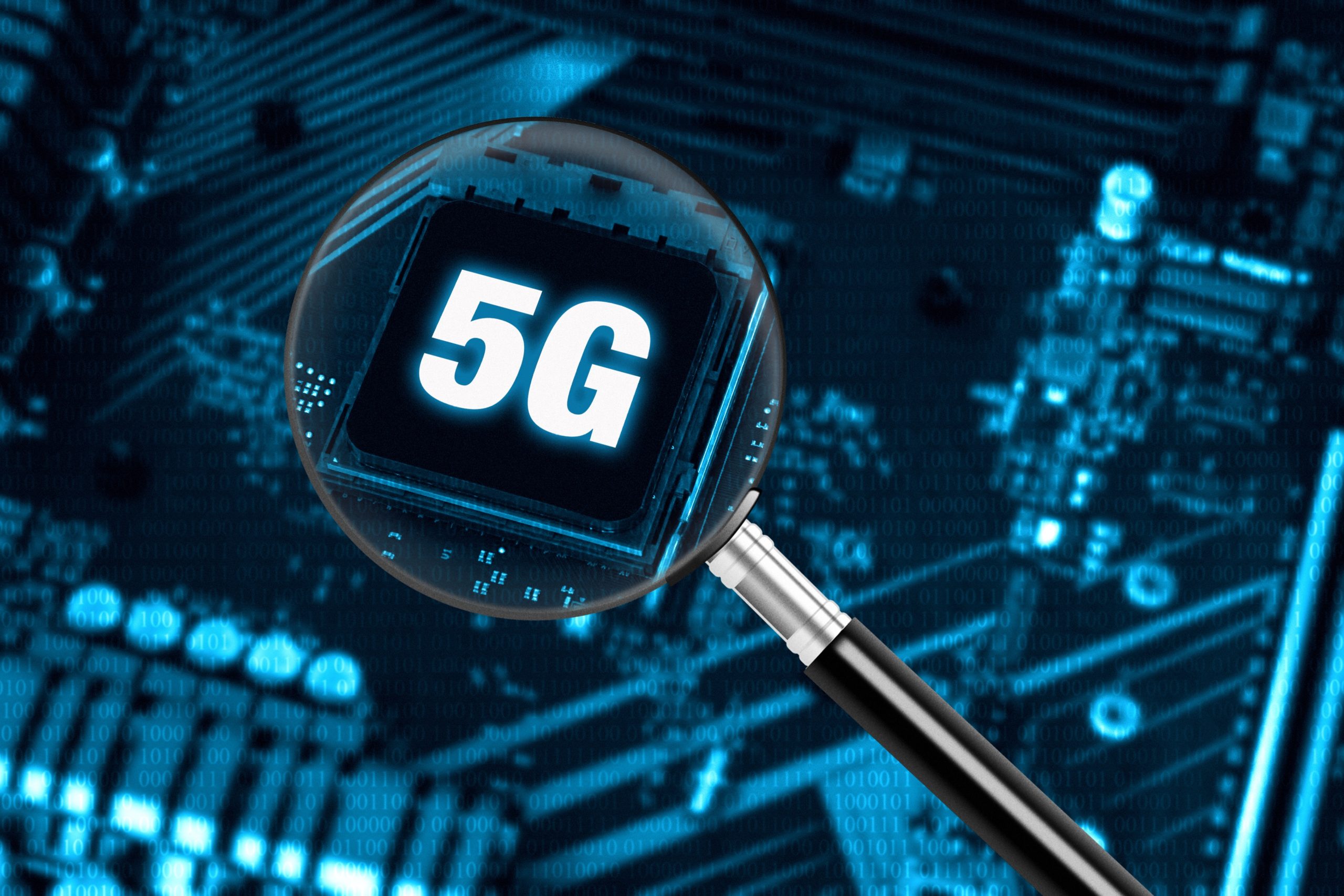The emergence of 5G, the fifth generation of mobile networks, is revolutionising the world of wireless technology with its high-speed and wide-ranging connectivity. The structured cabling industry, which involves the standardised design and installation of cabling infrastructure, plays an essential role in this transformation. As the backbone of modern technological infrastructure, structured cabling systems support data transmission, voice communication, and video streaming, and are crucial for the successful deployment of 5G networks.
In this article, we will examine how the 5G revolution is impacting the structured cabling industry, the challenges and opportunities it presents, and what the future holds for structured cabling in a 5G world.
Section 1: Understanding the 5G Revolution
1.1. What is 5G and how does it differ from its predecessors (4G, 3G)?
5G, short for “fifth-generation”, is the latest evolution of wireless mobile networks, following 4G (fourth-generation) and 3G (third-generation) technologies. Unlike its predecessors, 5G offers faster data transfer speeds, greater reliability, and the capacity to connect a multitude of devices simultaneously. As 5G becomes more widespread, it will undoubtedly have a profound impact on the structured cabling industry.
1.2. Key features of 5G
5G technology is characterised by several key features that distinguish it from previous generations:
- Higher speed: 5G offers speeds up to 100 times faster than 4G, with data transfer rates potentially reaching up to 10 gigabits per second.
- Lower latency: With latency as low as one millisecond, 5G offers near-instantaneous data transfer, which is crucial for applications such as online gaming, virtual reality, and autonomous vehicles.
- Increased bandwidth: 5G networks have a broader bandwidth, meaning they can accommodate a larger amount of data transmission and support more simultaneous users without network congestion.
- Massive device connectivity: 5G is designed to handle a massive number of connected devices, supporting up to one million devices per square kilometer.
1.3. Applications of 5G technology
5G’s remarkable features have enabled various groundbreaking applications, transforming industries and everyday life. Some key applications include:
- Internet of Things (IoT): With its massive device connectivity, 5G enables IoT devices to communicate and share data seamlessly, paving the way for smart homes, smart cities, and industrial automation.
- Augmented Reality (AR) and Virtual Reality (VR): The high-speed and low-latency capabilities of 5G enable real-time AR and VR experiences, enhancing immersive gaming, education, and training simulations.
- Smart cities: 5G’s extensive connectivity is crucial for the development of smart cities, where various devices and systems communicate and interact to optimize traffic, energy, waste management, and more.
- Autonomous vehicles: The low-latency and high-speed features of 5G are essential for the safe operation of autonomous vehicles, enabling them to communicate and react quickly to changes in the environment.
Section 2: Structured Cabling – An Overview
2.1. Definition and Overview of Structured Cabling
Structured cabling is a standardised approach to designing and installing a comprehensive telecommunications infrastructure within a building or campus. It serves as the backbone of modern IT systems, supporting data, voice, video, and other electronic communications. The primary goal of structured cabling is to provide a reliable, scalable, and flexible network infrastructure that can efficiently accommodate current and future networking needs.
2.2. Components of Structured Cabling
Structured cabling systems consist of several key components that work together to create a robust and efficient network:
- Cables: These are the physical transmission medium that connects different parts of the network. They come in various types, such as copper, fiber optic, and coaxial cables.
- Connectors: These are the devices used to join cables to network equipment or other cables. They play a crucial role in signal transmission and come in various types, including RJ45, SC, and LC connectors.
- Patch Panels: Patch panels serve as the central hub for network connections, allowing for easy reconfiguration of the network without the need to run new cables.
- Switches: Switches are essential components of a structured cabling system that direct data traffic within the network, enabling efficient communication between devices.
2.3. Types of Cables Used in Structured Cabling
There are several types of cables used in structured cabling systems, each with its advantages and applications:
- Copper Cables: These are the most common types of cables used for data transmission. They are relatively inexpensive and easy to install. Category 5e, Category 6, and Category 6A are popular choices for structured cabling systems.
- Fibre Optic Cables: These cables use light signals to transmit data, allowing for faster data transfer rates and longer transmission distances compared to copper cables. They are ideal for backbone connections and high-bandwidth applications.
- Coaxial Cables: These cables are typically used for cable TV, internet, and other high-frequency applications. They are less commonly used in structured cabling systems but still have niche applications.
2.4. Importance of Structured Cabling in Modern Telecommunications Infrastructure
Structured cabling is a critical element of modern telecommunications infrastructure. It provides a reliable and organised foundation for network connectivity, enabling seamless communication between devices and supporting various applications, including data transfer, voice communication, video conferencing, and more.
As technology continues to evolve and the demand for high-speed, reliable connectivity increases, the structured cabling industry plays a crucial role in meeting these needs and ensuring the efficient operation of businesses, organisations, and communities.
Section 3: The Impact of 5G on Structured Cabling
3.1. Increased Demand for Structured Cabling Infrastructure
The advent of 5G technology has brought about a significant increase in the demand for structured cabling infrastructure. This demand is driven by several factors:
- Higher Data Speeds and Reliability: 5G networks offer faster data speeds and more reliable connections compared to their predecessors. As a result, there is an increasing need for a robust and high-capacity cabling infrastructure to support the data transmission requirements of 5G.
- Backhaul Connectivity for 5G Base Stations: 5G base stations, which are essential for providing 5G coverage, require high-capacity backhaul connections to handle the increased data traffic. Structured cabling plays a crucial role in providing this backhaul connectivity, enabling efficient data transfer between the base stations and the core network.
3.2. Shift Toward Fiber Optic Cabling
The shift towards 5G technology has also led to an increased focus on fiber optic cabling within the structured cabling industry. This trend is driven by several factors:
- High-Speed Data Transfer: Fibre optic cables are capable of supporting much higher data transfer rates compared to copper cables. This makes them well-suited for supporting the high-speed data requirements of 5G networks.
- Replacing Copper Cables: As the structured cabling industry adapts to the demands of 5G, there is a growing trend of replacing existing copper cables with fiber optic cables. This is due to the superior performance of fiber optic cables in terms of data transfer speeds, transmission distances, and resistance to interference.
3.3. Rise of Edge Computing
Another trend associated with the 5G revolution is the rise of edge computing. Edge computing refers to the practice of processing data closer to the source of data generation, such as IoT devices, rather than transmitting it to a central data center for processing. This approach reduces latency and improves the overall efficiency of data processing. The impact of edge computing on the structured cabling industry is as follows:
- Reducing Latency: Edge computing plays a crucial role in reducing latency in 5G networks. By processing data closer to the source, edge computing reduces the time it takes to transmit and process data, resulting in faster response times for applications that rely on real-time data.
- Connecting Edge Data Centers: Structured cabling plays an essential role in connecting edge data centers to the core network. As edge computing becomes more prevalent, the structured cabling industry will need to adapt to the requirements of connecting a growing number of edge data centers to the core network, ensuring reliable and high-speed data transfer.
Section 4: Challenges and Opportunities
4.1. Challenges
The transition to 5G technology presents several challenges for the structured cabling industry, including:
- Investment in Infrastructure Upgrades: As mentioned earlier, the transition to 5G technology requires the structured cabling industry to upgrade existing infrastructure. This involves replacing copper cables with fibre optic cables, enhancing the capacity of existing systems, and deploying new technologies to support 5G networks. These upgrades require significant investment, which can be a challenge for many companies in the industry.
- Technical Challenges: Deploying 5G-compatible structured cabling systems comes with technical challenges. These include ensuring compatibility with new and existing network equipment, managing increased data traffic, and maintaining optimal network performance. The industry needs to address these challenges to provide reliable and efficient cabling solutions for 5G networks.
- Data Security, Privacy, and Regulatory Compliance: As 5G technology enables the connectivity of more devices and the generation of more data, concerns related to data security, privacy, and regulatory compliance become increasingly important. The structured cabling industry must ensure that cabling systems are designed and deployed in a way that protects sensitive data and complies with relevant regulations.
4.2. Opportunities
Despite these challenges, the transition to 5G technology also presents several opportunities for the structured cabling industry:
- Growth in Demand: The increasing demand for high-speed data transfer and connectivity, driven by the adoption of 5G technology, presents a growth opportunity for the structured cabling industry. As companies invest in infrastructure upgrades and new deployments, the industry is poised to benefit from this increased demand.
- New Technologies and Applications: The transition to 5G technology opens up opportunities for the structured cabling industry to explore and implement new technologies and applications. These include advanced cabling solutions, smart network management systems, and innovative data center designs.
- Collaboration with 5G Ecosystem Partners: The structured cabling industry can collaborate with other stakeholders in the 5G ecosystem, such as network equipment providers, data center operators, and telecommunication companies. These collaborations can help the industry develop integrated and optimized cabling solutions for 5G networks.
Section 5: Future Prospects

In this section, we will delve into the future prospects of the structured cabling industry and how it will evolve to support the advancements in wireless technology beyond 5G.
Potential for Further Advancements in Wireless Technology
As technology continues to advance, the next generations of wireless technology (6G and beyond) are already on the horizon. These future wireless technologies are expected to bring even faster speeds, greater device connectivity, and new applications, pushing the boundaries of what is possible in telecommunications. This evolving landscape will have a direct impact on the structured cabling industry.
Role of Structured Cabling in Supporting Future Wireless Technologies
The structured cabling industry will continue to play a pivotal role in supporting the deployment and operation of future wireless technologies. As the backbone of telecommunications infrastructure, structured cabling systems will need to evolve to meet the increasing demands of next-generation networks. This includes providing higher data transfer speeds, reducing latency, increasing capacity, and ensuring robust and reliable connectivity.
Importance of Continuous Innovation and Adaptation
To remain competitive and relevant in this fast-paced technological landscape, it is crucial for the structured cabling industry to continuously innovate and adapt. This includes developing new cabling solutions, materials, and technologies that can support the unique requirements of future wireless networks. By embracing innovation and adaptation, the structured cabling industry can position itself as a key player in the ongoing wireless revolution.
The future prospects of the structured cabling industry are closely tied to the advancements in wireless technology. By anticipating the needs of future wireless networks and embracing innovation, the industry can ensure its continued growth and relevance in the telecommunications sector.
Conclusion
As we look ahead, it is clear that the structured cabling industry will play a pivotal role in supporting the ongoing wireless revolution. The industry will need to continuously innovate and adapt to the evolving requirements of future wireless technologies, including 6G and beyond.
By staying at the forefront of technological advancements and embracing the 5G revolution, the structured cabling industry can position itself as a key player in the telecommunications sector and drive its continued growth and success.





